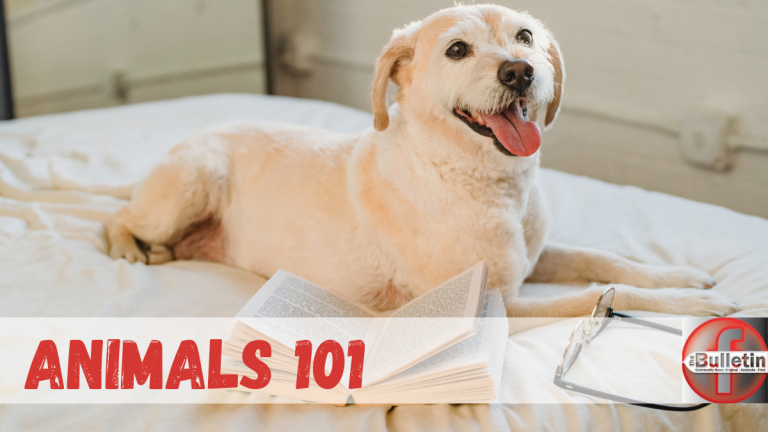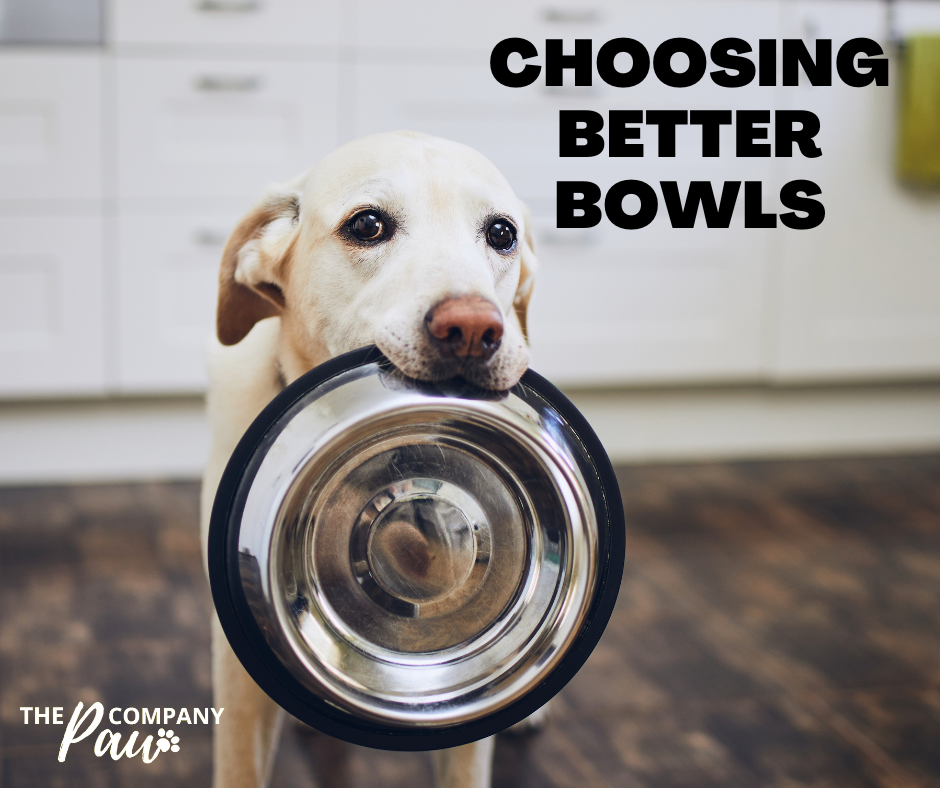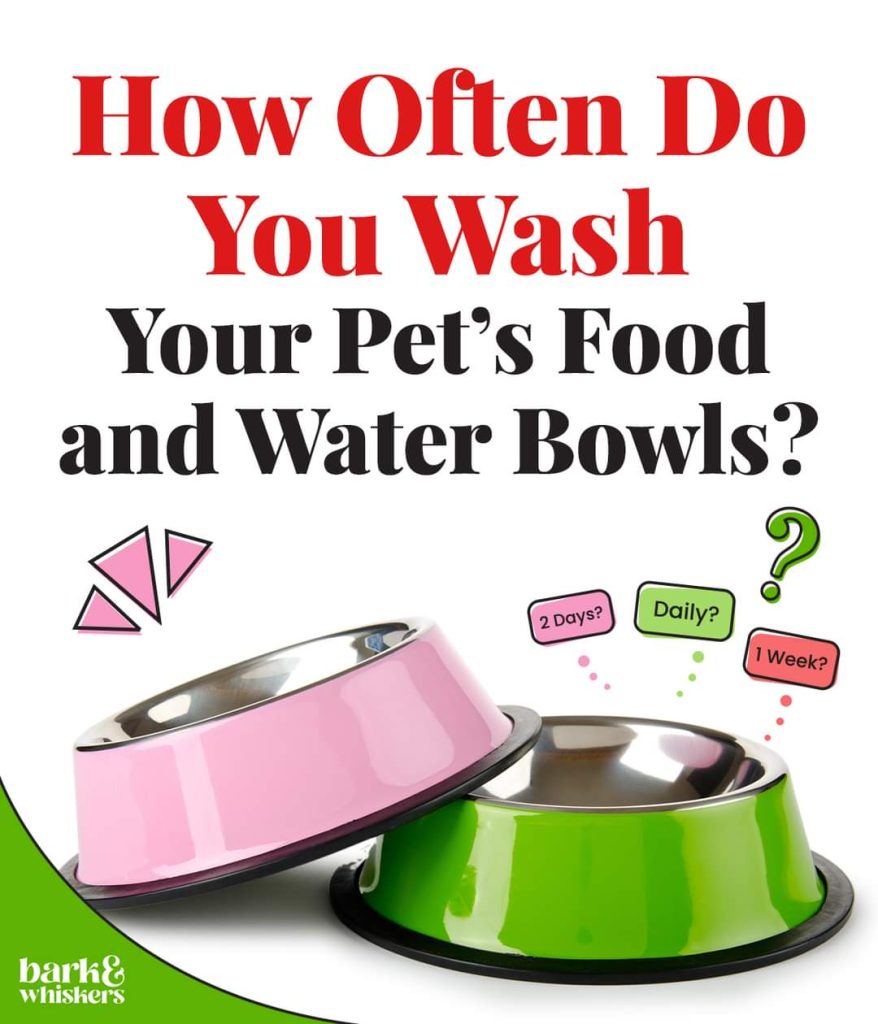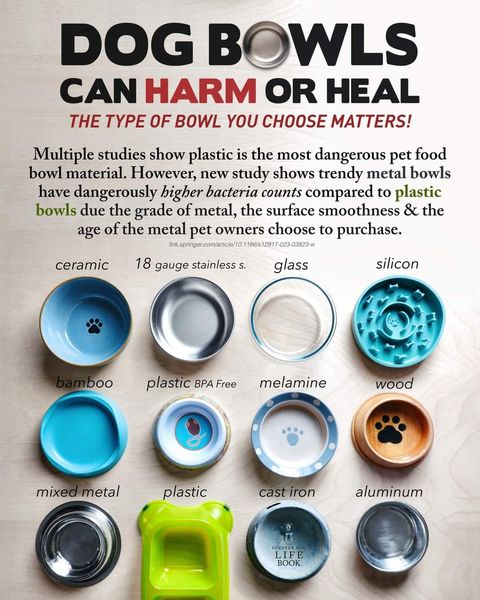
UPGRADE YOUR PET’S DINING EXPERIENCE WITH THE PERFECT BOWL WHILE BALANCING FUNCTION, SAFETY AND STYLE.
When buying bowls for our pets, we often pick one that looks nice and is convenient for us but, do you ever think about how that bowl can affect your pet’s health and comfort? The type of bowl you choose—its material and design—can make a big difference.
When selecting a pet bowl, it’s essential to weigh the pros and cons of each type, considering factors like your pet’s size, mouth shape, ear length, health, and temperament. While style and design might be appealing for home decor, prioritize your pet’s health as paramount.
Consider eco-friendly options to minimize environmental impact and explore sustainable materials where possible. Remember, quality doesn’t necessarily correlate with high cost, so research and user reviews can guide you. Seek a bowl that meets all your criteria, balancing aesthetics with functionality to find the right fit for both your pet and your home.

TIPS FOR CHOOSING BOWLS
Here are a few factors to consider when buying food and water bowls for your pets:
Size Matters
Choosing the right bowl size is important based on your pet’s breed, size, and eating habits. Oversized or undersized bowls can affect how comfortably your pet eats. Try using a large, flat bowl that gives plenty of room for your pet to eat comfortably.
Keep in mind that dogs, like cats can get whisker fatigue if the bowls are too small and their whiskers touch.
Health Considerations
Consider raising the bowl if your pet is elderly, or has arthritis, or digestive issues. This can be more comfortable by reducing joint pressure and neck flexion. This is also important when it comes to allergies or the safety of the bowl material, plus it can keep the feeding area cleaner.
Safety
Ensure the safety of your pet while using the bowl, such as avoiding bowls with sharp edges or small parts that could be chewed off.
Specialized Bowls
For fast eaters, opt for a slow-feeder bowl to encourage slower eating and better digestion. For those with other digestive issues or joint problems, you also need to consider the type of bowl even more as mentioned above.
Non-slip Flooring
Use a non-slip mat under the bowl, especially for older pets, to prevent it from moving around.
Energy Levels
Pets with high energy levels might benefit from puzzle bowls to stimulate mental activity during mealtime. This can also be great for cats who are hunters.
Eating Habits
Some pets prefer self-feeders or water dispensers but ensure they maintain a healthy weight and don’t overeat.
Area and Placement
Place bowls in a shaded area to prevent water from heating up and away from potentially contaminating environments. Ensure the eating area is spacious and doesn’t make your pet feel trapped.
Social Eating
Although eating is a social experience for humans, it should be a sole dining experience for your pets. Ensure bowls are not placed too close together to maintain a comfortable eating experience for each pet.
Resources
Provide separate bowls for each pet, especially in multi-pet households. Cats, in particular, need separate food and water bowls as well as a litter box for each cat.
Angle
Consider using bowls with a slight angle (about 15⁰) to aid digestion for some pets. This is not ideal for all pets.
Water Considerations
Provide clean, fresh water daily in a bowl or consider a fountain feature to attract pets to drink more as they prefer running water. Remember to put water and food in a shaded area.
Hygiene
The dog water bowl has previously been identified as the third most contaminated item within the household and can be a breeding ground for dangerous germs & life-threatening bacteria that can put the entire house at risk, researchers at University Centre Hartpury have revealed.
You don’t want to eat out of a dirty bowl, right? No matter which type of bowl you use, the best thing you can do to protect yourself and your dog’s health is to wash your bowl after every meal with hot water and soap. In addition, at least once a week, run your bowls through the hot cycle in your dishwasher. This is important to avoid biofilm buildup, which can contribute to health issues.
Some materials or designs might be easier to clean than others. Easy-to-clean bowls can help maintain proper hygiene and prevent bacterial growth.

Travel Bowls
Don’t forget to have travel bowls handy for outings or trips with your pet.
Transitioning Bowls
If you are changing your pet’s food bowl, offer food in the old bowl and original location as well as use the new bowl, and then in a slightly different location. This allows your pet to have a choice. You can then remove the old bowl once your pet starts using the new one. This allows your pet to adjust gradually. Remember to change food gradually too!
Material Choices
Plastic, Ceramic, or Stainless steel are the 3 popular choices, and like anything, they come with pros and cons.
PROS AND CONS OF DIFFERENT MATERIAL BOWLS

In their new book, The Forever Dog LIFE, the authors lay out the pros and cons of different types of bowls. Here’s a glimpse of what you need to know:
PLASTIC – Plastic bowls are cheap, but also easily destructible and not so environmentally friendly. Plastic bowls grew the highest number of bacteria over time according to the Hartpury study. Endocrine-disrupting chemicals found in plastic bowls are not good at all. Also, be aware plastic bowls can cause Plastic Dish Nasal Dermatitis: Chemicals in plastic absorb through the skin and inhibit the synthesis of melanin, leaving the nose and adjacent areas with pink blotches.
CERAMIC – Some suggest ceramic bowls are best for dogs with allergies as they do not sensitize, but they are heavy and expensive and bacteria can build up in the cracks. Hartpury scientists found the most harmful bacterial species (salmonella, E. coli, and MRSA) were most frequently found in ceramic bowls because people continue to use them after fine cracks in the glaze become visible. Lead can also be a problem when using these bowls.
STAINLESS STEEL – cheaper quality bowls have been involved in recalls due to heavy metal contamination. Be sure to buy high-quality bowls (18-gauge or 304 steel) from a trusted source. They are relatively safe, practical, and easy to clean although some say they are too noisy. This is my prefered choice of bowl.
GLASS – Durable, kitchen-friendly glass bowls made from 100% borosilicate glass (Pyrex) make great food and water bowls on the floor.
So, which dish is best to use for a dog bowl? The bowl that grows the least amount of life-threatening bacteria!
Also, read which factors influence pet behaviour.
CAT SPECIFIC TIPS
Being self-sufficient survivalists, cats prefer to eat and drink in separate places. They feel safer eating and drinking this way as they are less likely to be spotted by predators (remember cats are prey animals as well as effective little predators).
Cats don’t like the idea of their food contaminating their water. Bear in mind cats are programmed to hunt, catch, and kill prey several times a day. This means consuming their food near their water source could risk contaminating the water with the blood or gut contents of their prey. The water would then act as a medium for bacteria and attract flies. A sick cat is a vulnerable cat!
Double bowls tend to be small, quite deep, and are of course joined together, which could risk aggravating a cat’s sensitive whiskers. This can be uncomfortable and even painful for your cat, causing something called ‘whisker fatigue’ resulting in food aversion or preventing a cat from finishing its food!
Do your research on the proper food for your pet’s specific needs! When animals are not eating there could be serious health conditions present, so seek veterinary care immediately. Learn more about improving your pet’s life on The Paw Company’s page including food-specific tips from trusted veterinarians.
Picking the right pet bowl isn’t just about looks or convenience; it’s about ensuring your pet stays healthy and comfortable. Whether you go for stainless steel for durability, ceramic for style, or specialized bowls for specific needs, your choice matters. By considering the material, size, and design, you’re not just improving your pet’s mealtime—you’re showing them you care about their well-being in every way.
Next week we will look at choosing safe toys for your pets.
WHEN YOU KNOW BETTER, DO BETTER!